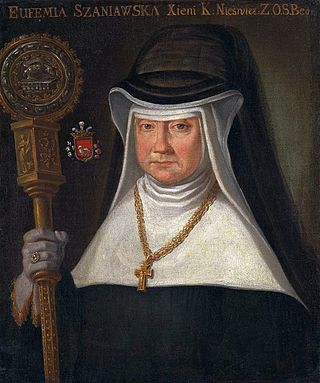
An abbess is the female superior of a community of nuns in an abbey.
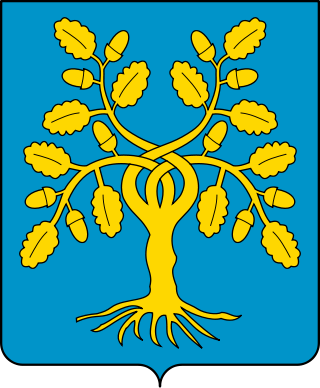
The House of Della Rovere was a powerful Italian noble family. It had humble origins in Savona, in Liguria, and acquired power and influence through nepotism and ambitious marriages arranged by two Della Rovere popes: Francesco Della Rovere, who ruled as Sixtus IV from 1471 to 1484 and his nephew Giuliano, who became Julius II in 1503. Sixtus IV built the Sistine Chapel, which was named after him. Julius II was patron to Michelangelo, Raphael and many other Renaissance artists and started the modern rebuilt of St. Peter's Basilica. Also the Basilica of San Pietro in Vincoli in Rome was the family church of the Della Rovere. Members of the family were influential in the Church of Rome, and as dukes of Urbino, dukes of Sora and lords of Senigallia; the title of Urbino was extinguished with the death of Francesco Maria II in 1631, and the family died out with the death of his granddaughter Vittoria, Grand Duchess of Tuscany.
In English law, the benefit of clergy was originally a provision by which clergymen accused of a crime could claim that they were outside the jurisdiction of the secular courts and be tried instead in an ecclesiastical court under canon law. The ecclesiastical courts were generally seen as being more lenient in their prosecutions and punishments, and defendants made many efforts to claim clergy status, often on questionable or fraudulent grounds.

Spanish America refers to the Spanish territories in the Americas during the Spanish colonization of the Americas. The term "Spanish America" was specifically used during the territories' imperial era between 15th and 19th centuries. To the end of its imperial rule, Spain called its overseas possessions in the Americas and the Philippines "The Indies", an enduring remnant of Columbus's notion that he had reached Asia by sailing west. When these territories reach a high level of importance, the crown established the Council of the Indies in 1524, following the conquest of the Aztec Empire, asserting permanent royal control over its possessions. Regions with dense indigenous populations and sources of mineral wealth attracting Spanish settlers became colonial centers, while those without such resources were peripheral to crown interest. Once regions incorporated into the empire and their importance assessed, overseas possessions came under stronger or weaker crown control.
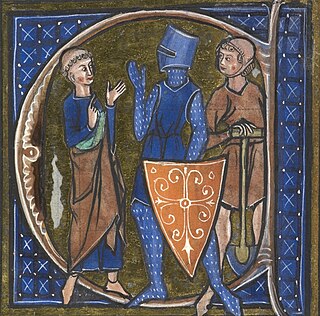
The estates of the realm, or three estates, were the broad orders of social hierarchy used in Christendom from the Middle Ages to early modern Europe. Different systems for dividing society members into estates developed and evolved over time.
Gallicanism is the belief that popular secular authority—often represented by the monarch's or the state's authority—over the Catholic Church is comparable to that of the pope. Gallicanism is a rejection of ultramontanism; it has something in common with Anglicanism, but is nuanced, in that it plays down the authority of the Pope in church without denying that there are some authoritative elements to the office associated with being primus inter pares. Other terms for the same or similar doctrines include Erastianism, Febronianism, and Josephinism.
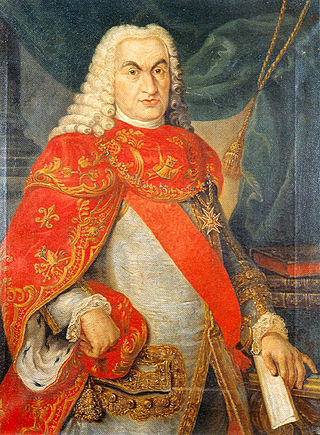
Bernardo Tanucci was an Italian jurist and statesman, who brought an enlightened absolutism style of government to the Kingdom of the Two Sicilies for Charles III and his son Ferdinand IV.

An advocatus, sometimes simply advocate, Vogt (German), or avoué (French), was a type of medieval office holder, particularly important in the Holy Roman Empire, who was delegated some of the powers and functions of a major feudal lord, or for an institution such as an abbey. They typically had responsibility for the "comital" functions which defined the office of early medieval "counts", such as taxation, recruitment of militias, and maintaining law and order. This type of office could apply to specific agricultural lands, villages, castles, and even cities. In some regions, advocates came to be governors of large provinces, sometimes distinguished by terms such as Landvogt.
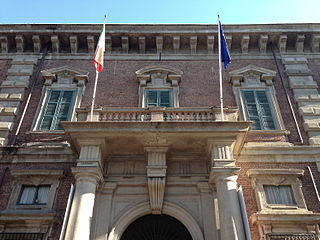
Palazzo Brera or Palazzo di Brera is a monumental palace in Milan, in Lombardy in northern Italy. It was a Jesuit college for two hundred years. It now houses several cultural institutions including the Accademia di Brera, the art academy of the city, and its gallery, the Pinacoteca di Brera; the Orto Botanico di Brera, a botanical garden; an observatory, the Osservatorio Astronomico di Brera; the Istituto Lombardo Accademia di Scienze e Lettere, a learned society; and an important library, the Biblioteca di Brera.

Arsenije III Crnojević was the Archbishop of Peć and Serbian Patriarch from 1674 to his death in 1706. In 1689, during the Habsburg-Ottoman War (1683–1699), he sided with Habsburgs, upon their temporary occupation of Serbia. In 1690, he left the Patriarchal Monastery of Peć and led the Great Migration of Serbs from Ottoman Serbia into the Habsburg monarchy. There he received charters, granted to him by Emperor Leopold I, securing religious and ecclesiastical autonomy of Eastern Orthodoxy in the Habsburg Monarchy. In the meanwhile, after restoring their rule in Serbian lands, Ottomans allowed the appointment of a new Serbian Patriarch, Kalinik I (1691–1710), thus creating a jurisdictional division within the Serbian Orthodox Church. Until death, in 1706, Patriarch Arsenije remained the head of Serbian Orthodox Church in Habsburg lands, laying foundations for the creation of an autonomous ecclesiastical province, later known as the Metropolitanate of Karlovci.

The Catholic Archdiocese of Luxembourg is an archdiocese of the Latin Church of the Catholic Church in the Grand Duchy of Luxembourg, comprising the entire Grand Duchy. The diocese was founded in 1870, and it became an archdiocese in 1988. The seat of the archdiocese is the Cathedral of Notre Dame in the city of Luxembourg, and since 2011 the archbishop is Jean-Claude Hollerich.

The Accademia di Belle Arti di Brera, also known as the Accademia di Brera or Brera Academy, is a state-run tertiary public academy of fine arts in Milan, Italy. It shares its history, and its main building, with the Pinacoteca di Brera, Milan's main public museum for art. In 2010 an agreement was signed to move the accademia to a former military barracks, the Caserma Magenta in via Mascheroni. In 2018 it was announced that Caserma Magenta was no longer a viable option, with the former railway yard in Via Farini now under consideration as a potential venue for the campus extension.
The monarchia Sicula was a historical but unduly inflated right exercised from the beginning of the sixteenth century by the secular authorities of Sicily, according to which they claimed final jurisdiction in Catholic matters, independent of the Holy See.
The patronato system in Spain was the expression of royal patronage controlling major appointments of Church officials and the management of Church revenues, under terms of concordats with the Holy See. The resulting structure of royal power and ecclesiastical privileges, was formative in the Spanish colonial empire. It resulted in a characteristic constant intermingling of trade, politics, and religion. The papacy granted the power of patronage to the monarchs of Spain and Portugal to appoint clerics because the monarchs "were willing to subsidize missionary activities in newly conquered and discovered territories."
The Concordat of 1851 was a concordat between the Spanish government of Queen Isabella II and the Vatican. It was negotiated in response to the policies of the anticlerical Liberal government, which had forced her mother out as regent in 1841. Although the concordat was signed on 16 March 1851, its terms were not implemented until 1855.
The suppression of monasteries refers to various events at different times and places when monastic foundations were abolished and their possessions were appropriated by the state.

The Landi were a noble family from Piacenza, in northern Italy. From 1551 to 1582, they were princes of the Val di Taro, now in the province of Parma, at that time in papal territory. Their principality is sometimes called Lo Stato Landi ; although the term is not well known, there is substantial documentation of it in the Archivio Segreto Vaticano, in the Vatican City.
Relations between Mexico and the Holy See were interrupted following Independence. The Holy See recognized the new country in 1836. Mexico had two problems in relation to the Roman Catholic Church; one was royal patronage and the other was the appointment of bishops.
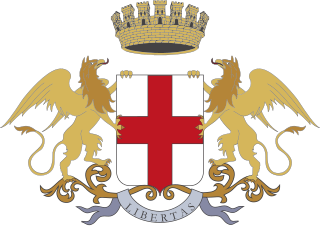
Lorenzo De Mari was the 157th Doge of the Republic of Genoa and king of Corsica.
Regalism is the idea that the monarch has supremacy over the Church as an institution, often specifically referring to the Spanish monarchy and the Catholic Church in the Spanish Empire. Regalists sought reforms that "were intended to redefine the clergy as a professional class of spiritual specialists with fewer judicial and administrative responsibilities and less independence than in Habsburg times."










